Today, we embark on a journey through the Abu Dhabi Architecture landscape akin to unfolding the pages of a vivid narrative that speaks of power, culture, and visionary ambition. Abu Dhabi’s architecture is not merely an assortment of structures but a testament to its pulsating heart and dynamic ethos. It is an ever-evolving canvas that mirrors the emirate’s rapid economic growth and bold aspirations on the world stage.

Overview of Abu Dhabi’s Architectural Evolution
Abu Dhabi’s architectural journey is a tale of transformation from modest fishing villages to a skyline punctuated with some of the world’s most innovative buildings. This transformation has been dramatic and swift, catalyzed by the discovery of oil in the late 1950s. The ensuing wealth financed a metamorphosis that ushered in an era of ambitious construction projects. Regional architects and artisans initially laid the city’s foundational urban fabric, embedding local traditions and climatic responses into their designs. As the town burgeoned, international architects were drawn to its shores, bringing a palette of modernist and post-modernist styles.
This blend of local and global influences created a unique architectural vocabulary, a dialogue between the arid desert landscape and the bold aspirations of a burgeoning metropolis. The city’s architecture evolved through phases. Initially grounded in the functionality and simplicity necessitated by the harsh desert climate, it gradually embraced grandeur and spectacle. Today, Abu Dhabi is a city of contrasts, where the domes and minarets of mosques coexist with cutting-edge skyscrapers, each telling its story of cultural identity, economic vitality, and technological advancement.
The Significance of Architecture in Shaping Abu Dhabi’s Identity

Abu Dhabi’s architecture potently symbolizes national identity and cultural expression. Each building is imbued with symbolic significance, whether it’s the ethereal silhouette of the Sheikh Zayed Grand Mosque or the futuristic geometry of the Al Bahr Towers. These structures are functional spaces symbolic of the emirate’s values, the path to modernity, and its place in the global narrative.
The city’s architecture reflects a conscious effort to craft a unique image for Abu Dhabi that honors its past while eagerly embracing the future. Traditional Islamic motifs and ingenious adaptations to the desert environment speak of the city’s roots, while bold geometric forms and innovative sustainable technologies herald its future ambitions. This interplay between tradition and innovation is a deliberate strategy to position Abu Dhabi as a cultural and economic powerhouse.
Abu Dhabi’s architecture is a rich, complex tapestry of influences, aspirations, and meanings. It represents the emirate’s journey from a tranquil desert outpost to a bustling metropolis characterized by an unyielding spirit of ambition and a deep reverence for cultural heritage. As we delve further into the city’s architectural marvels, let us appreciate them not merely as physical structures but as monuments to human creativity, cultural pride, and the relentless pursuit of progress.
Historical Foundations and Cultural Influences
Abu Dhabi’s architectural landscape is a modern phenomenon and a continuation of deep historical and cultural threads woven over centuries. To fully appreciate the contemporary skyline, one must delve into the rich tapestry of Traditional Arab architecture, which provides the bedrock for today’s design innovations.
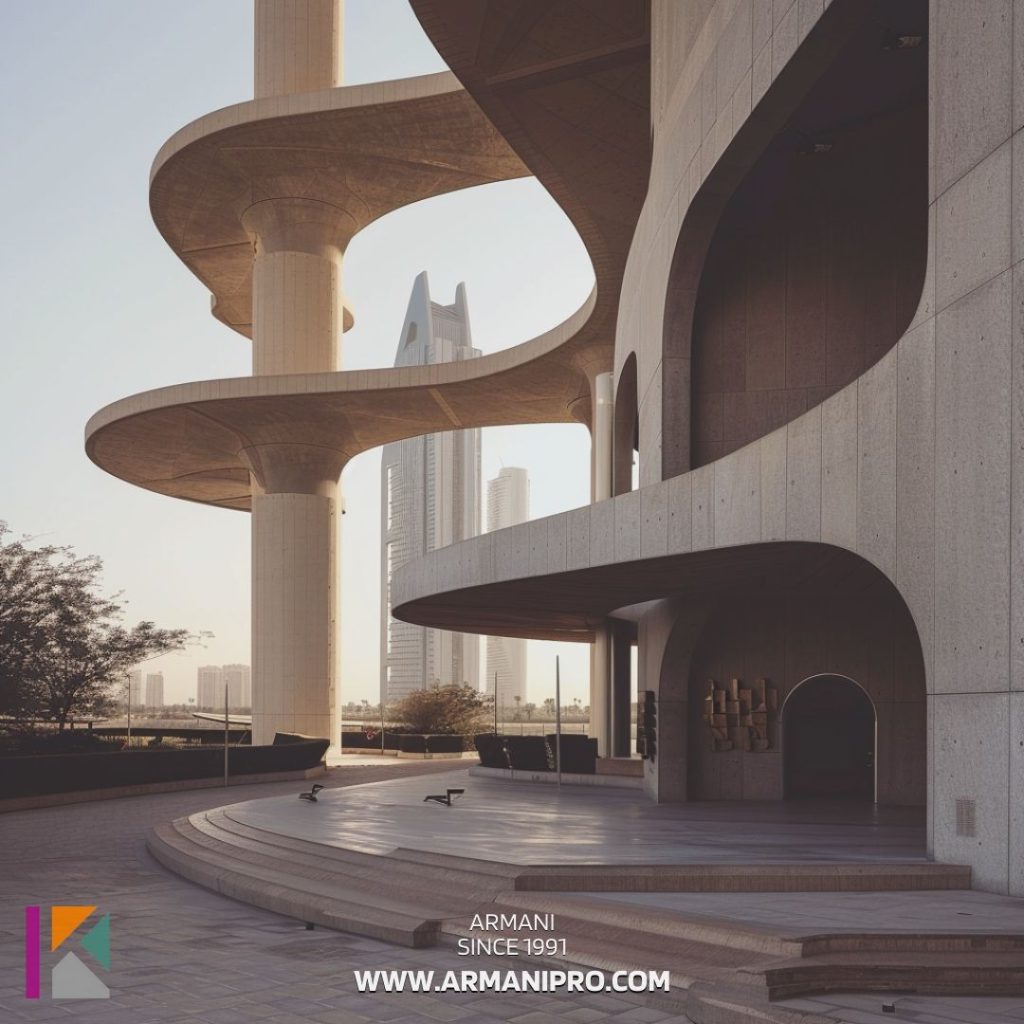
Traditional Arab Architecture: Origins and Characteristics
The origins of Traditional Arab architecture in the region are deeply intertwined with the Arabian Peninsula’s environmental, social, and religious fabric. Building techniques and styles were primarily dictated by the harsh desert climate, scarce resources, and nomadic lifestyle, leading to the development of functional, adaptable, and harmonious architecture.
The quintessential elements of traditional Arab architecture are evident in the old forts, palaces, and mosques scattered across the region. These include thick walls constructed from mud bricks or coral stone to provide insulation, courtyards that serve as cool retreats, wind towers for natural ventilation, and ornate wooden doors and screens that offer privacy while allowing air circulation. The aesthetics were grounded in simplicity and practicality, yet they deeply understood geometry and symmetry.
The impact of Islam profoundly influenced architectural design, introducing new forms and symbols. Mosques became the focal point of communities, featuring iconic elements such as domes, minarets, and intricate arabesque patterns. These structures were not just places of worship but also centers of learning, governance, and social gathering, reflecting the central role of religion in everyday life.
The Impact of Islam and Local Culture on Architectural Design
Islam’s advent in the Arabian Peninsula brought a distinctive architectural idiom. The religion’s emphasis on unity, order, and the geometric representation of the cosmos translated into an architectural language that is both functional and spiritually resonant. Islamic architecture in Abu Dhabi and the broader region is characterized by its repetitive geometric patterns, calligraphy, and a focus on creating serene and contemplative spaces.
The architecture of Abu Dhabi is a testament to how local culture and Islamic principles have fused to create a unique style. This is evident in the city’s mosques, which are not only places of worship but also embodiments of Islamic art and architecture. For example, the Sheikh Zayed Grand Mosque incorporates modern design techniques and materials while remaining deeply rooted in the traditional Islamic architectural heritage. Its vast courtyards, floral designs, and reflective pools echo the paradise gardens described in Islamic scripture, creating a sense of peace and transcendence.
The historical foundations and cultural influences of traditional Arab architecture and Islam are profoundly embedded in Abu Dhabi’s architectural fabric. They provide a context for understanding the city’s contemporary buildings and many innovative interpretations of these ancient forms and ideas. As Abu Dhabi continues to evolve, its architecture remains a dialogue between the ancient and the modern, the local and the global, tradition and innovation. This rich and multifaceted narrative makes Abu Dhabi Architecture a subject of endless fascination and study for architects, historians, and cultural enthusiasts alike.
The Pioneers of Abu Dhabi’s Architectural Scene
Abu Dhabi’s skyline, a symphony of architectural splendor, owes its form to the visionary architects and firms that dared to transform the desert canvas into a testament to human ingenuity and cultural expression. These pioneers navigated the delicate dance between honoring the past and boldly marching toward the future, thus shaping the Abu Dhabi Architecture we behold today.
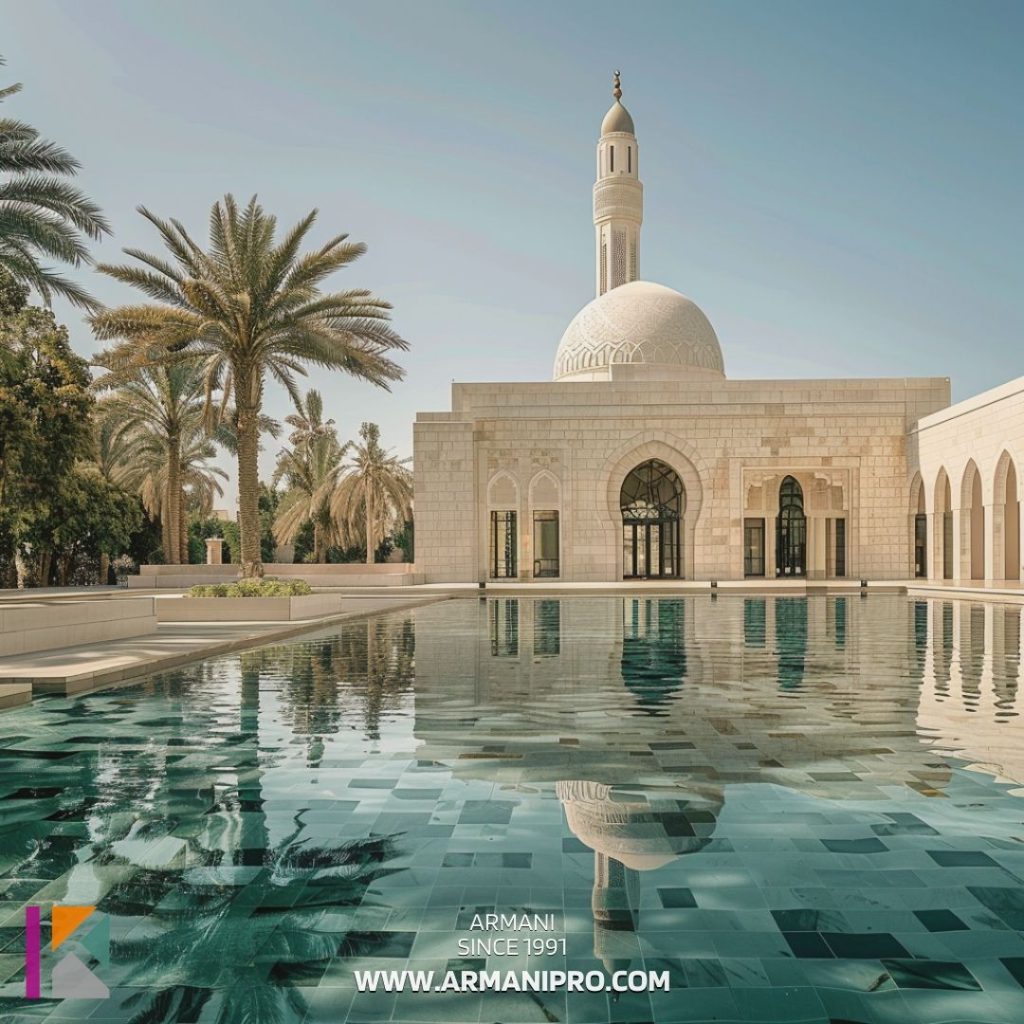
Key Architects and Firms Shaping Abu Dhabi’s Skyline
Various architects and firms have orchestrated Abu Dhabi’s architectural evolution, each bringing its philosophy, style, and innovation. These key figures have contributed to individual buildings and influenced the city’s overall character and trajectory.
One cannot discuss Abu Dhabi’s architectural transformation without acknowledging the contributions of firms like Foster + Partners, which designed the iconic Zayed National Museum, and Jean Novel, the mastermind behind the Louvre Abu Dhabi. These institutions have become cultural beacons with innovative designs, symbolizing the city’s global cultural aspirations.
Local firms also play a crucial role, blending international styles with regional aesthetics to create globally resonant and locally grounded buildings. The National Consultative Council building by Ewan Architectural & Engineering Consultancy and the Al Bahar Towers by Aedas are prime examples, showcasing how regional elements like the “Mash Rabiya” can be reinterpreted in modern facades.
The Transition from Traditional to Modern Architecture

The transition from traditional to modern architecture in Abu Dhabi is a narrative of adaptation, innovation, and reverence. Initially, architecture in Abu Dhabi was intimately tied to the region’s geography and climate, utilizing local materials and techniques to create structures suited to the desert environment. The city underwent rapid modernization with the economic boom propelled by oil discovery. This period saw the introduction of cutting-edge technologies, materials, and architectural philosophies from around the world, converging with the local architectural heritage.
This transition was not abrupt but a gradual integration, where modern buildings began incorporating traditional elements such as courtyards, wind towers, and ornamental details. The result was a unique blend of modernity, tradition, technology, and artistry. This is vividly illustrated in projects like the Abu Dhabi Global Market Square, where sleek glass facades meet the intricate patterns and textures reminiscent of Islamic art. In conclusion, the pioneers of Abu Dhabi’s architectural scene have masterfully steered the city’s skyline from its humble beginnings to its current stature as a global architectural marvel.
Their legacy is not just the buildings that punctuate the city but the enduring spirit of innovation and cultural fusion that they have embedded in the very soul of Abu Dhabi Architecture. As we look upon these modern structures, we see reflections of the past and blueprints for the future, a horizon continually expanding with possibilities and dreams.
Iconic Structures and Modern Marvels
In the vast and dynamic expanse of the United Arab Emirates, Abu Dhabi stands out as a beacon of architectural innovation and design. The city’s landscape is punctuated with structures that are not just buildings but emblematic of an era, a people, and their aspirations. These iconic structures and modern marvels of Abu Dhabi Architecture represent the zenith of engineering prowess and aesthetic vision, pushing the boundaries of what is possible.
Detailed Look at Landmark Buildings
- Emirates Palace: A testament to opulent luxury and traditional design, it goes beyond being a hotel; it symbolizes architectural grandeur. With its grand domes, ornate arabesque patterns, and an imposing facade, the Emirates Palace blends rich Islamic architectural heritage and cutting-edge technology. Its interiors, adorned with gold, marble, and crystals, showcase the lavish lifestyle of the region, while its expansive gardens and private beach reflect the natural beauty of its setting. The Emirates Palace is not just a building; it’s a landmark that represents the cultural and economic power of Abu Dhabi.
- Capital Gate: Leaning more dramatically than the Tower of Pisa, Capital Gate is an engineering marvel that defies what a building can do. Known as the “Leaning Tower of Abu Dhabi,” this skyscraper is a testament to human ingenuity and daring. Its diagrid exterior is not just visually striking but also serves as a critical component of its structural integrity. Capital Gate symbolizes Abu Dhabi’s futuristic vision, encapsulating the city’s ambition and forward-thinking mindset.
- Aldar Headquarters: As the world’s first circular skyscraper, Aldar Headquarters is an architectural icon that reflects Abu Dhabi’s innovative spirit. Its distinctive shape represents unity and stability, echoing the region’s cultural values. The building’s design is aesthetically groundbreaking and environmentally considerate, featuring several sustainable and energy-efficient elements. Aldar Headquarters is a model for future architectural endeavors, showcasing how form and function merge into a harmonious and sustainable whole.
Engineering Feats and Architectural Innovations
Abu Dhabi’s architectural landscape is a playground for the world’s most brilliant minds in architecture and engineering. The city’s skyline is a building collection that challenges conventional wisdom and redefines construction limits.
- Etihad Towers: This complex of buildings is a mixed-use development that has become synonymous with Abu Dhabi’s luxury and style. The towers’ sleek and modern design reflects the city’s cosmopolitan nature, while their construction involved innovative engineering techniques to achieve the slender and elegant forms that soar into the sky.
- Louvre Abu Dhabi: Designed by Jean Novel, the Louvre Abu Dhabi is a masterpiece of contemporary architecture, drawing inspiration from traditional Arabic architectural elements. The museum’s dome, a complex geometric structure of stars, creates a mesmerizing “rain of light,” simulating the overlapping palm leaves traditionally used in local roofing. This building is not just a museum; it’s a testament to the cultural dialogue between the East and West, ancient and modern.
In conclusion, the iconic structures and modern marvels of Abu Dhabi Architecture are more than mere buildings; they are narratives in concrete, glass, and steel. They tell stories of cultural identity, technological advancement, and a relentless pursuit of innovation. These structures stand as monuments to the visionary leaders and architects who dared to dream and build the impossible, shaping the city into a tapestry of architectural wonders that continue to captivate and inspire. Each building uniquely contributes to the ever-evolving story of Abu Dhabi, a city that is as much about its past as its limitless future.
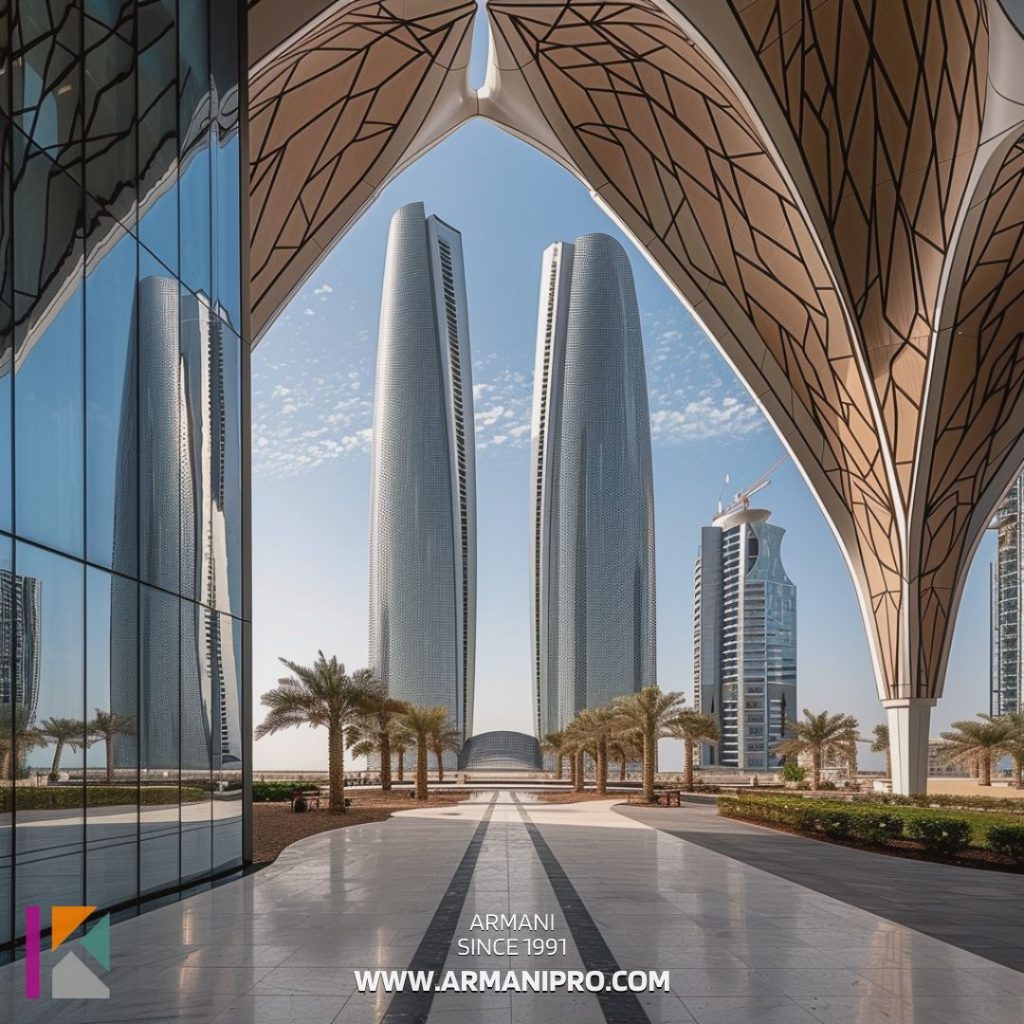
The Louvre Abu Dhabi: A Case Study in Cultural Fusion
The Louvre Abu Dhabi emerges as a serene sanctuary on the Saadiyat Island, a remarkable testament to cultural fusion and architectural innovation. As a symbolic piece of Abu Dhabi Architecture, it is not merely a museum; it’s a philosophical statement about unity, diversity, and the universal nature of human experience across civilizations.
The Design Philosophy behind the Louvre Abu Dhabi
Designed by Pritzker Prize-winning architect Jean Novel, the Louvre Abu Dhabi is an architectural interpretation of an Arabian medina (city). It encapsulates a microcosm of the larger global village, fostering a dialogue between cultures and times. Novel envisioned this masterpiece as a “museum city” floating on the waters of the Persian Gulf, blurring the lines between the sea and land.
The design philosophy transcends geographical and cultural boundaries, aiming to reflect the shared human experience through its universal approach to art and architecture. It embodies light and shadow, form and fluidity, reflecting different cultures’ juxtaposition under a single dome. This philosophy is about bridging the past and present, the regional and the global, much like the city of Abu Dhabi itself.
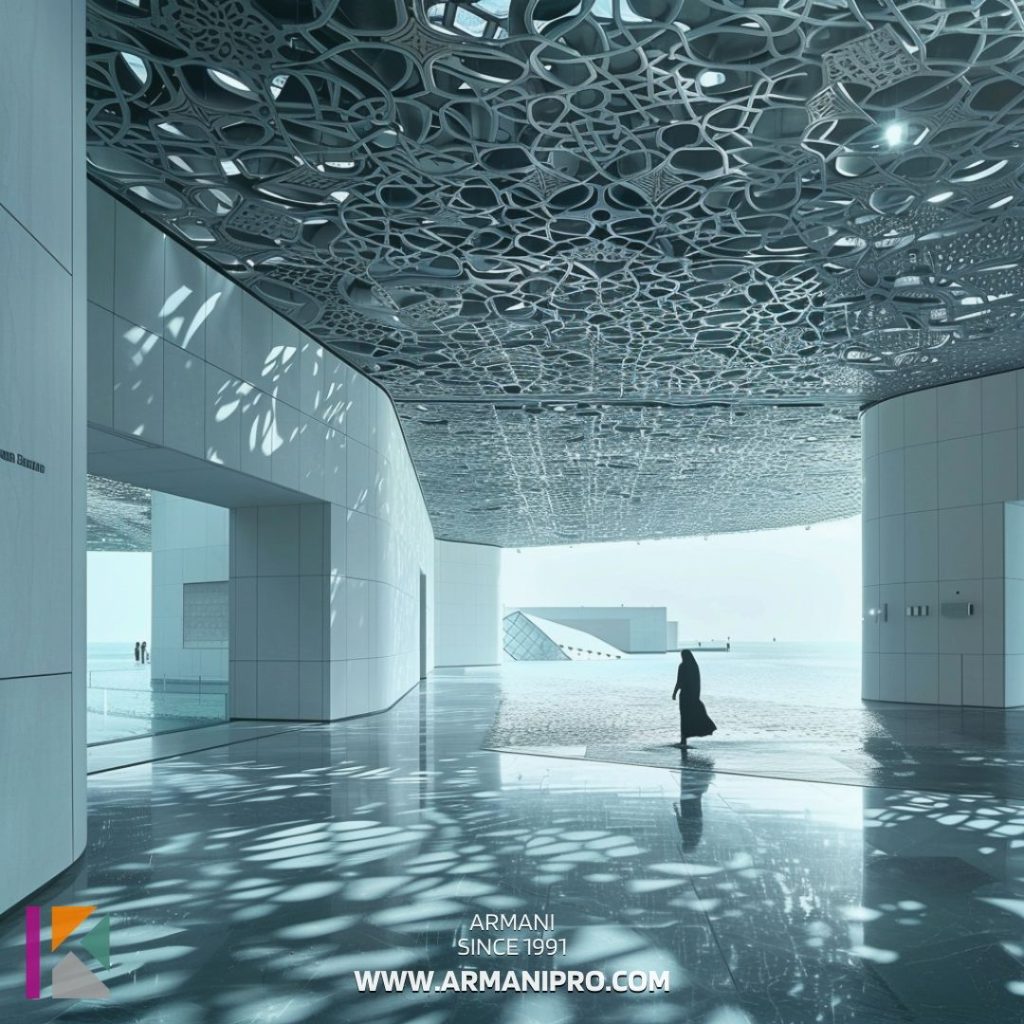
Architectural Elements and the Significance of Light and Water
- Light: The Louvre Abu Dhabi’s dome, an intricate lattice of stars, creates a mesmerizing effect known as the “Rain of Light.” This feature is inspired by the overlapping palm leaves traditionally used in local roofing. The geometric complexity of the dome allows sunlight to filter through, creating dynamic and ever-changing patterns of light and shadow that mimic the foliage of palm trees in an oasis. The light represents knowledge — a metaphor for enlightenment as it illuminates the works of art below.
- Water: The museum is designed to give an illusion of floating on the waters of the Persian Gulf, with water channels running beneath the museum galleries. This interplay with water is a nod to the UAE’s maritime history and the sea’s importance in Arab culture. The reflecting pools around and beneath the museum amplify its serene and mystical ambiance, creating a sense of tranquility and continuity between the sky, sea, and land.
- Materials and Structure: The materials used in the Louvre Abu Dhabi speak to its design philosophy of blending cultures. The white and light colors of the buildings reflect the sun’s rays, a practical and aesthetic choice that resonates with traditional architecture in the region. At the same time, the use of ultra-modern materials and techniques showcases the museum’s global narrative and futuristic vision.
The Louvre Abu Dhabi is a crown jewel in Abu Dhabi Architecture, encapsulating the city’s spirit of cultural amalgamation and forward-thinking. It’s where light and shadow dance through geometric patterns; water whispers stories of ancient trade routes, and art and architecture come together to tell a universal story of humanity. As a case study in cultural fusion, it exemplifies how architecture can transcend its physical form to become a vessel for deep cultural and philosophical expression.
Sustainable Architecture: Building the Future
In the heart of the Middle East, Abu Dhabi stands as a pioneering city embracing the future of sustainable and green architecture. This commitment reflects a broader vision to ensure environmental stewardship, economic vitality, and quality of life. Abu Dhabi Architecture is increasingly characterized by its innovative approach to sustainability, merging traditional design principles with cutting-edge technology to create environmentally responsible and culturally relevant buildings.

Abu Dhabi’s Approach to Sustainable and Green Architecture
Abu Dhabi’s approach to sustainable architecture is driven by a recognition of the harsh desert climate and a commitment to the principles of the Esti Dama program, which means ‘sustainability’ in Arabic. This comprehensive initiative is part of the Abu Dhabi Vision 2030, a strategic framework for the emirate’s development. It includes the Pearl Rating System, an ambitious framework for ensuring integrated sustainability in all aspects of urban development.
The city’s strategy involves using new technologies and materials and returning to traditional architectural wisdom that respects the environment and local context. This includes the intelligent use of orientation, landscaping, indigenous materials, and incorporating renewable energy sources, water conservation methods, and waste reduction technologies. The result is a distinctive form of Abu Dhabi Architecture that is innovative and respectful of its roots.
Notable Sustainable Projects and Future Trends
- Masdar City: Perhaps the most ambitious sustainable development project in Abu Dhabi is Masdar City, which is envisioned as one of the world’s most sustainable urban communities. This low-carbon development is designed to be a hub for cleantech and sustainable living. Masdar City is a living laboratory for sustainable design and technology, from its energy-efficient buildings designed to minimize heat gain and maximize natural light to its cleantech initiatives and research facilities.
- Al Bahar Towers: The dynamic façade is inspired by traditional Islamic lattice screens, known as “Mash Rabiya,” which reduce heat gain while allowing light to enter the building. This adaptive façade responds to the sun’s movement, minimizing cooling energy consumption and setting a new standard for sustainable design in high-rise buildings.
Yas Island’s Sustainable Practices: Yas Island is known for its sustainable and eco-friendly approach, including energy-efficient hotels and attractions in building structures and entire landscapes. The commitment to sustainability is woven into the fabric of the island’s recreational, residential, and business developments.
Future Trends in Sustainable Architecture
Looking ahead, Abu Dhabi’s architecture is set to continue its journey towards sustainability, with several trends shaping its future. Integrating innovative technology and the Internet of Things (IoT) in buildings will enhance efficiency and adaptability.
There will be a greater emphasis on retrofitting buildings with sustainable features, reducing the city’s carbon footprint. Exploring new materials and construction techniques, including 3D printing and modular construction, is expected to revolutionize sustainable building practices further.
Sustainable architecture in Abu Dhabi is not merely about constructing eco-friendly buildings; it’s about creating a sustainable ecosystem encompassing economic, social, and environmental dimensions. As the city continues to innovate and invest in green technologies and principles, Abu Dhabi Architecture is poised to be at the forefront of the global sustainable movement, setting an example for cities worldwide in building a greener, more sustainable future.
The Influence of Globalization on Abu Dhabi’s Architecture
Abu Dhabi’s architectural narrative is a compelling testament to how globalization shapes urban landscapes. This bustling metropolis has emerged as a canvas for architectural experimentation, where global influences interweave with local traditions to create a distinctive skyline. In this vibrant context, Abu Dhabi Architecture is not just evolving; it’s redefining the essence of cultural expression and technological innovation in the built environment.
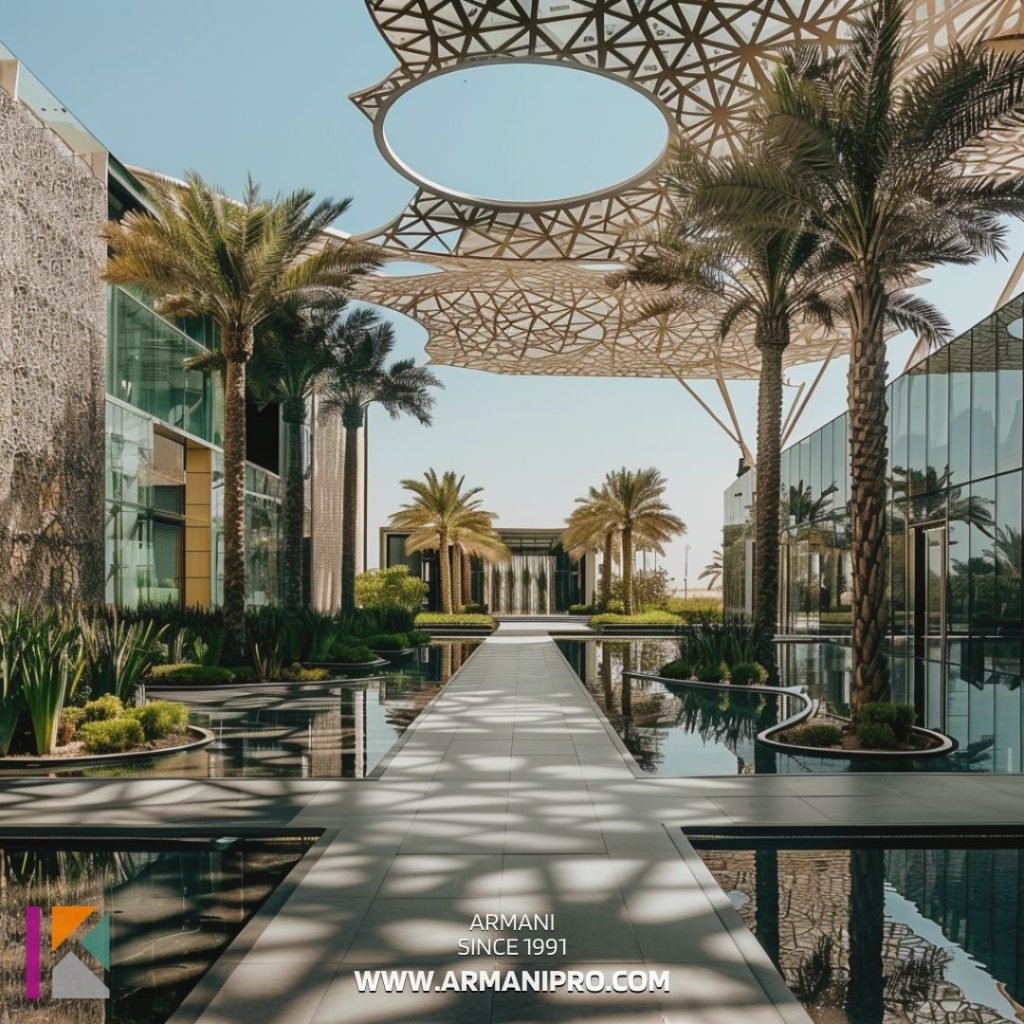
The Blending of Global Architectural Styles with Local Motifs
In Abu Dhabi, the influx of international styles has not occurred in isolation but rather in a dynamic dialogue with the indigenous architecture of the region. This confluence is evident in the city’s skyline, which showcases skyscrapers inspired by global trends alongside buildings that feature traditional Arab elements such as courtyards, wind towers, and ornate geometric patterns.
One of the most striking aspects of this blending is the way modern materials and technologies are employed to reinterpret traditional designs for the contemporary era. Glass and steel structures might feature latticework inspired by the Mash Rabiya or incorporate elements of Islamic art, effectively marrying the new with the old. The result is a unique architectural language that speaks to global modernity and local heritage.
How International Architects are Redefining Abu Dhabi’s Cityscape
Abu Dhabi’s ambitious urban development has attracted world-renowned architects who have brought diverse perspectives and innovative techniques. These architects are not merely importing international styles but adapting and transforming them in response to the local environment, culture, and needs.
For instance, Frank Gehry’s work in the upcoming Guggenheim Abu Dhabi promises to be a bold new interpretation of the museum concept, integrating regional materials and landscapes. Jean Novel’s Louvre Abu Dhabi is another prime example, with its dome creating a mesmerizing pattern of light and shade that pays homage to Arabic design while pushing the boundaries of architectural engineering.
These projects and others are not standalone structures but parts of a larger narrative of change and innovation. They reflect a city that is not just open to the world but actively engages with it, creating a dynamic and ever-evolving architectural landscape.
Future Directions
As globalization continues influencing Abu Dhabi’s architecture, the city will likely witness even more daring and innovative designs. The fusion of global and local will evolve with newer technologies and materials, and as environmental sustainability becomes increasingly crucial, so will the integration of green principles into this architectural melting pot.
In the years to come, Abu Dhabi Architecture will undoubtedly continue to be a rich field of study and a source of inspiration. It reflects the city’s status as a cosmopolitan hub and testament to the power of cultural exchange and innovation. In conclusion, the influence of globalization on Abu Dhabi’s architecture is a multifaceted phenomenon, reflecting a broader trend of cultural exchange and adaptation.
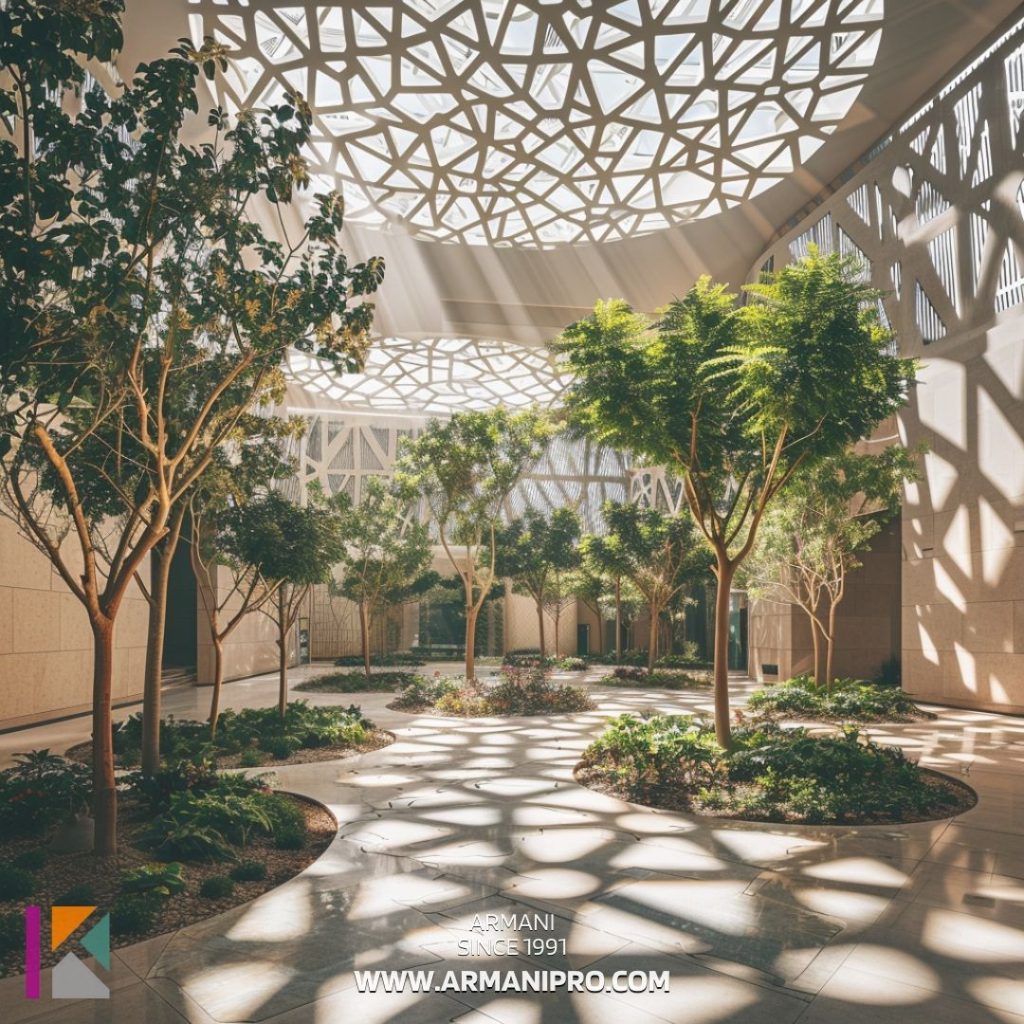
The city’s buildings tell a story of a place rooted in its history and traditions but always reaching towards the future, embracing new ideas, technologies, and forms of expression. As we witness this ongoing transformation, it becomes clear that Abu Dhabi is not just a witness to global architectural trends but is actively contributing to the narrative of contemporary design.
Challenges and Future Directions
As Abu Dhabi continues positioning itself as a global metropolis, its architectural landscape encounters various challenges while steering towards promising future directions. Marrying tradition with modernity and navigating the evolving architectural demands presents a complex but exciting frontier for the region’s architects, planners, and cultural advocates.
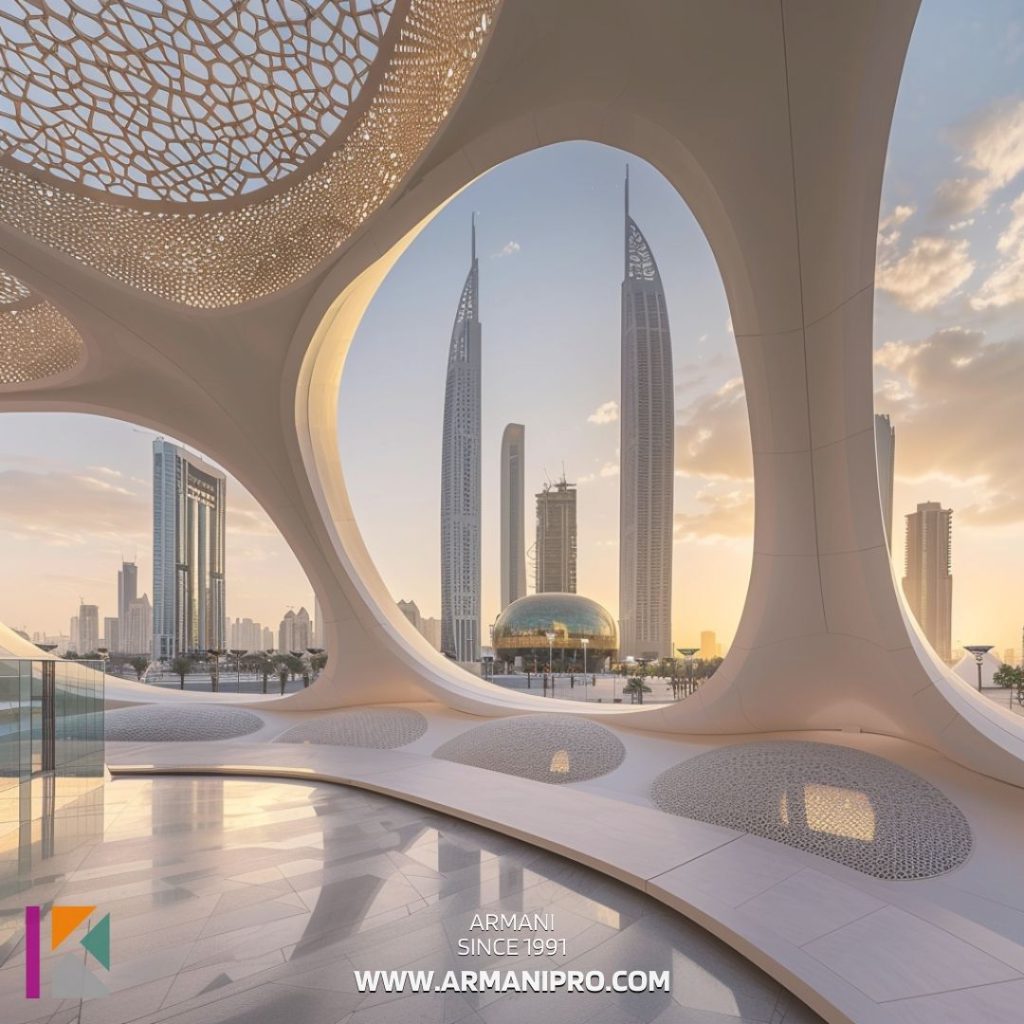
Balancing Modernity with Tradition in Future Projects
The challenge of integrating the rich heritage of Arabic and Islamic architecture with cutting-edge design and technology is at the forefront of Abu Dhabi’s architectural evolution. This balance is not merely aesthetic but deeply rooted in cultural identity and sustainability.
Future projects must respect and reflect the region’s cultural narratives, environmental conditions, and historical context while embracing innovation and global architectural trends. The solution lies in a respectful and revolutionary approach, drawing from the past and envisioning the future.
This involves the architects’ vision and the collaboration of historians, artists, and the community. It requires a deep understanding of traditional materials and techniques and how modern technology can adapt or enhance them. The goal is to create buildings that are not only physically located in Abu Dhabi but are also an intrinsic part of its cultural fabric.
The Evolving Architectural Landscape of Abu Dhabi
Abu Dhabi’s architectural landscape continuously evolves and is shaped by socio-economic changes, technological advancements, and environmental concerns. The city’s rapid growth has brought about unprecedented urban development, with ambitious projects pushing architectural design’s boundaries. However, this evolution is not without its challenges. The need for sustainable development, cultural preservation, and community engagement is more critical than ever.
As the city moves forward, several key trends are likely to influence its architectural trajectory:
- Sustainability and Green Architecture: As awareness of climate change and environmental degradation increases, sustainable architecture will become even more critical. Abu Dhabi will likely continue investing in green buildings, renewable energy, and sustainable urban planning.
- Technological Integration: The future of architecture in Abu Dhabi is intertwined with technological advancements. From intelligent buildings to 3D printing and AI, technology will enable more innovative, efficient, and personalized constructions.
- Cultural Renaissance: As Abu Dhabi asserts itself on the global stage, there is a growing interest in revitalizing and showcasing local culture and heritage. This might manifest in architecture that profoundly reflects the region’s narratives, aesthetics, and values.
- Community-Centric Design: There is a growing recognition of the importance of community and public spaces in urban development. Future projects will likely emphasize inclusivity, accessibility, and public engagement, creating spaces that foster community well-being and cultural interaction.
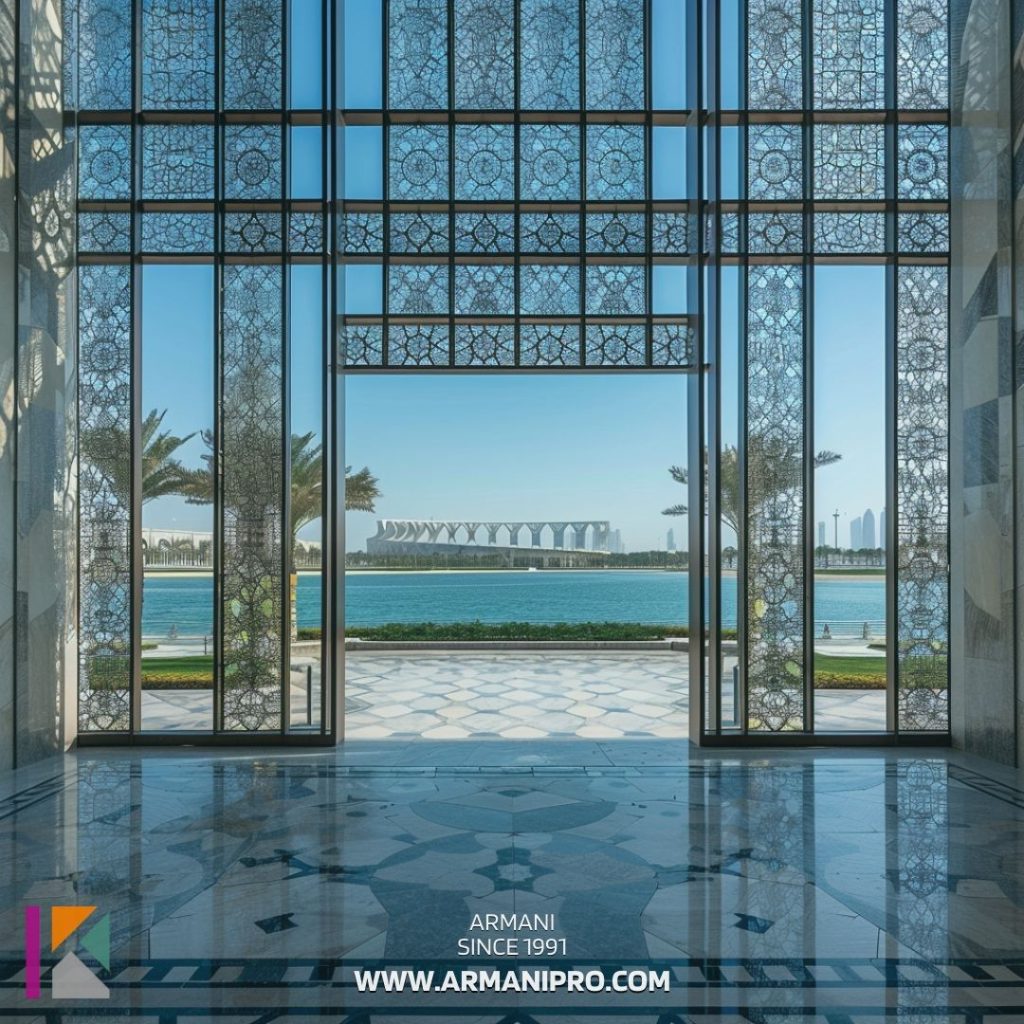
Conclusion: The Continuum of Abu Dhabi Architecture
As we reflect upon Abu Dhabi’s expansive journey of architecture, we see a narrative that is as much about the city’s physical landscape as it is about its cultural, economic, and societal aspirations. With its rich tapestry of influences, innovations, and identities, Abu Dhabi Architecture offers a compelling glimpse into the city’s soul.
Recap of Abu Dhabi’s Architectural Journey
The architectural journey of Abu Dhabi is a testament to the emirate’s rapid transformation from a tranquil pearl-diving community to a bustling global metropolis. This journey has been marked by a profound evolution in style, technology, and purpose, with each phase reflecting broader shifts in the city’s identity and ambitions.
From the traditional Arab structures that speak to the ingenuity of adapting to harsh desert climates to the modern skyscrapers that reach ambitiously towards the sky, Abu Dhabi’s architecture mirrors its dynamic spirit. Pioneers of various disciplines, from local artisans to international architectural titans, have left their mark on the city’s skyline, creating a diverse and vibrant architectural landscape.
Iconic structures like the Emirates Palace, Capital Gate, and the Louvre Abu Dhabi stand as monuments to aesthetic and engineering brilliance and to a vision of Abu Dhabi as a crucible of cultural and economic vitality.
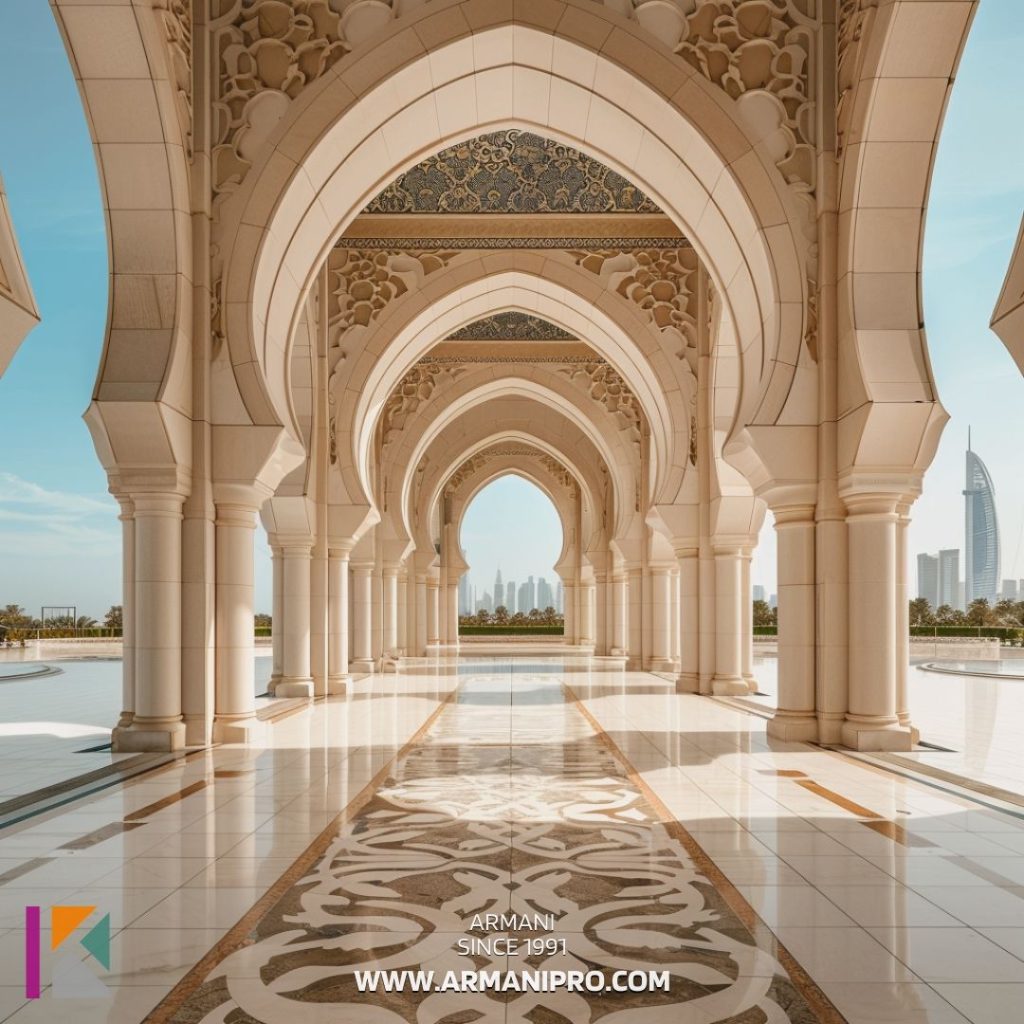
The Ongoing Legacy and Future Prospects of Abu Dhabi’s Architecture
Abu Dhabi Architecture’s legacy is ongoing and ever-evolving. It carries forward traditions while embracing the new, reflecting a deeply rooted city yet always reaching forward. Recent projects’ commitment to sustainability, cultural dialogue, and technological innovation are set to shape the future of the city’s architectural landscape.
As we look ahead, Abu Dhabi Architecture’s promise lies in its ability to adapt, innovate, and inspire. The city is poised to continue its journey with projects pushing the boundaries of architecturally possible, reflecting global trends while honoring local heritage. The challenge and opportunity for architects, planners, and citizens alike will be to shape these developments in a sustainable, inclusive way that reflects the rich tapestry of Abu Dhabi’s identity.
Abu Dhabi’s architecture will represent buildings, spaces, and people’s collective ambition and imagination in this continuum. It will continue to stand as a testament to human creativity, cultural pride, and the relentless pursuit of progress, inviting the world to witness and participate in its unfolding story. As the city grows, so will the narratives embedded in its architecture, marking Abu Dhabi’s place on the map and in the annals of global architectural heritage.
Resources and Related links:
Veesko / dsa-arch / louvreabudhabi / visitabudhabi.Ae / re-thinkingthefuture / aiamiddleeast / Wikipedia / leoadaly / archdaily / architecturaldigest / thenationalnews / blog.psinv / travelmag / darrenbradleyphotography / theculturetrip
Because the admin of this wweb site is working,
no uncertainty very soon it will be renowned,
due to its feature contents. https://www.waste-Ndc.pro/community/profile/tressa79906983/
Having read thos I thought it was extremely informative.
I appreciate you finring the time and effort to put this informative article together.
I once againn find myself spendng way too much time both reading
andd commenting. But so what, it was still worth it! https://www.Waste-ndc.pro/community/profile/tressa79906983/